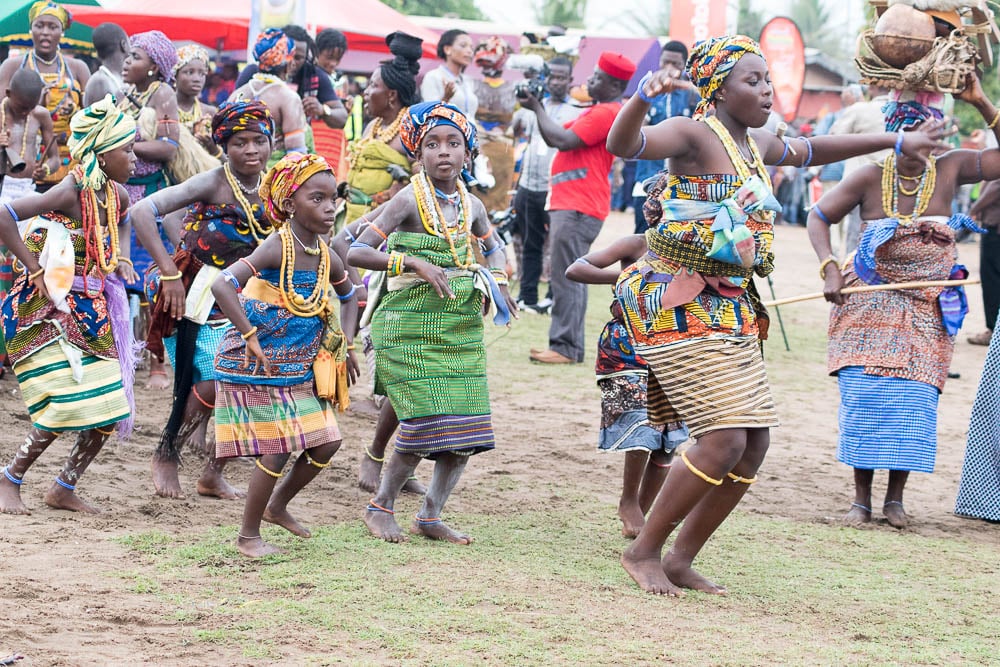Agbadza, a popular Ewe music, and dance, originated from the times of war and has evolved into a well-liked recreational activity. Its roots can be traced back to a historic war dance called Atrikpui, and it is mainly performed by the Ewe people of the Volta Region of Ghana during the Hogbetsotso Festival, a celebration by the Anlo Ewe community. It is also commonly performed by individuals of Ewe descent from Togo and Benin.
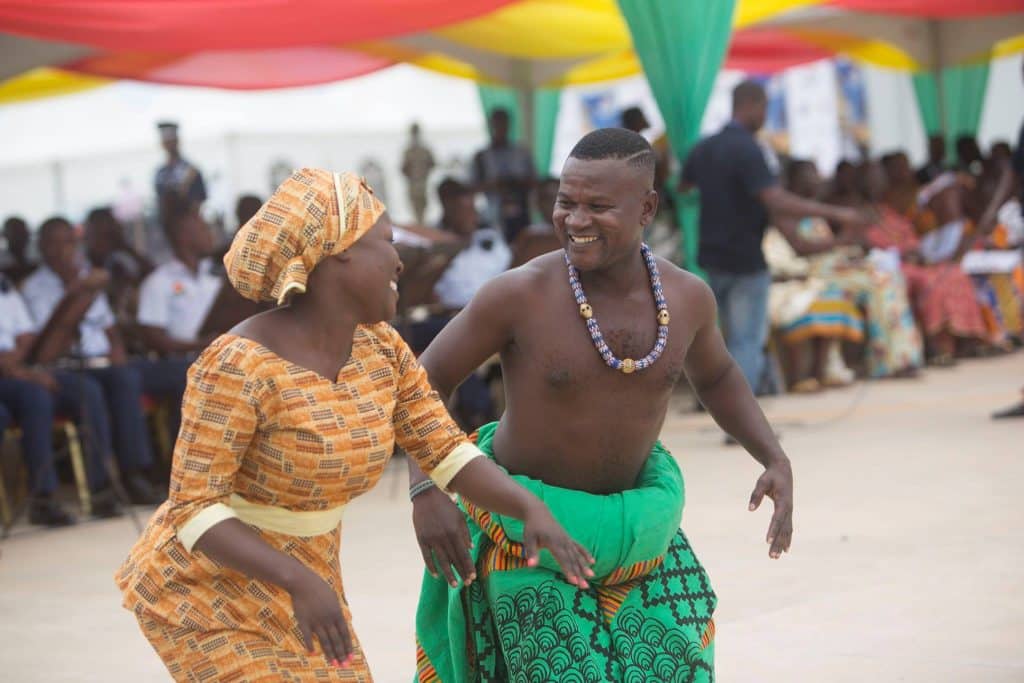
The dance consists of five movements, beginning with Banyinyi, a short prayer to the gods and ancestors, followed by the main dance, Vutsortsor. The third movement, Adzo, is less energetic, and only the master is allowed to drum along with Gankogui and Axatse. The fourth movement, Hatsatsa, involves the performance of historical songs alongside Gankogui and Atoke. Finally, the dance ends with another round of the main dance, Vutsortsor, which can last for several hours. Gankogui, an instrument in the form of a bell played using a stick, and Atoke, an iron bell shaped like a banana, played with a small forged iron rod, are both used for the same purpose.
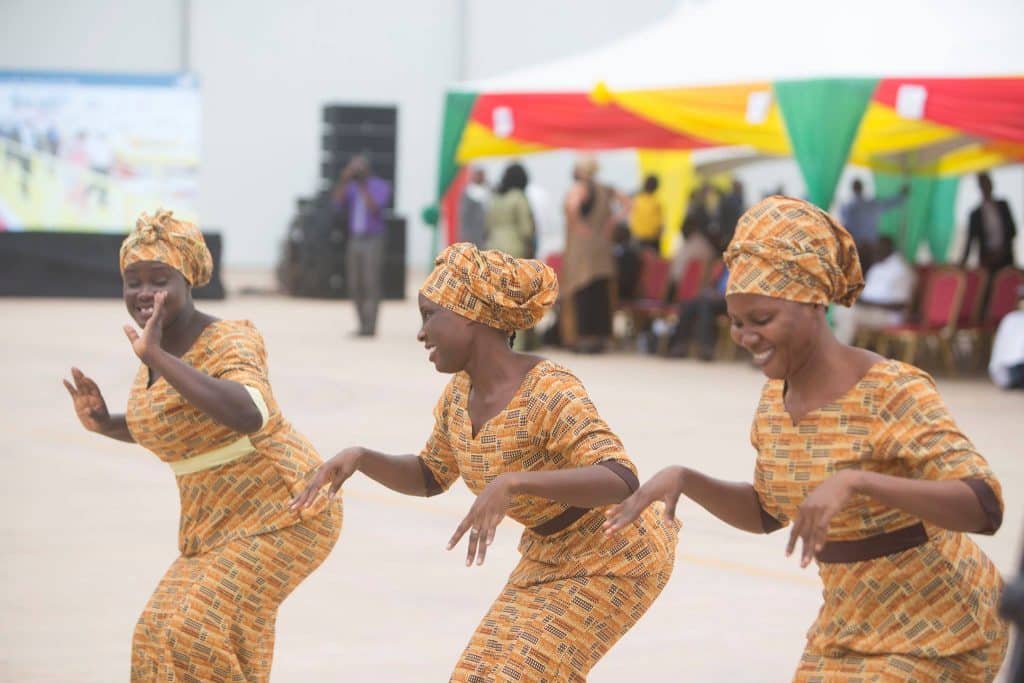
Agbadza is a dance performed at various events such as funerals, weddings, and parties. It serves as an Ewe identity emblem and is widely recognized as a unique aspect of Ewe culture. Unlike other Ewe dances, which are sometimes reserved for certain age groups, religions, or genders, anyone can join in the Agbadza dance. The dance is sometimes referred to as the “chicken dance” due to the bird-like movements required for the performance.
Origin
Agbadza has its roots in times of war when the Ewe people experienced various conflicts and oppression before settling in the Volta Region of Ghana and Southern Togo. The Ewe used songs and dances to motivate and prepare their warriors for battle, resulting in the creation of a dance called Atrikpui. Over time, Atrikpui evolved into Agbadza, which is now primarily used in joyous events.
In the past, during the Atrikpui era, Ewe singers and poets used Agbadza to sing about various themes such as battles, life and death, heroism, cowardice, migration, conquest, imperialism, and a warrior ethos. With a period of peace in the 1920s, the Ewe transitioned towards using some of their old songs as entertainment, leading to the popularity of Agbadza as the most widely played Ewe dance today.
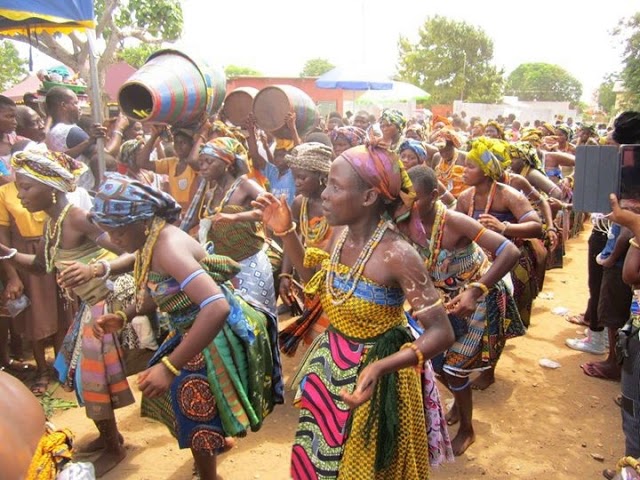
Instruments
The music of Agbadza is created through the use of various instruments, each with its own unique role in the ensemble.
The Bell is one such instrument that plays a crucial role in setting the tempo of the song. It provides a recurring phrase that serves as a timeline for the rest of the ensemble to follow. This helps to establish the rhythm of the song and ensures that all the other instruments and dancers are in sync.
Another important instrument in the Agbadza ensemble is the Sogo. This drum serves as the leader of the ensemble and is responsible for indicating to the other drums what they are supposed to be playing. It also communicates with the dancers through the use of drumming language, signaling when they are supposed to start dancing.
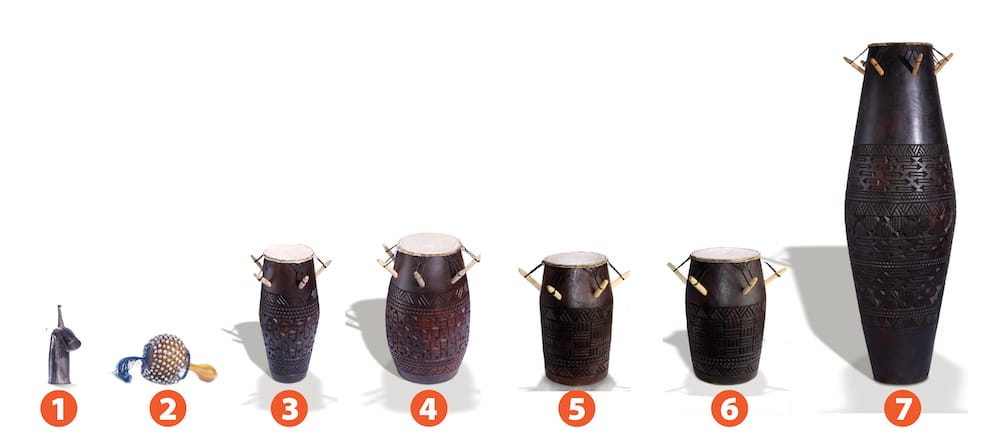
The Kidi is another drum in the ensemble that plays a vital role. It communicates with the Sogo to create a conversation using drumming language, adding depth and complexity to the music.
The Kagan is a support drum that has a recurring rhythm throughout the performance. It interacts with the Bell to create a specific melody, adding to the overall musical texture of the song.
The Rattle, also known as the Axatse, is a beaded instrument that follows the rhythm of the timeline closely. It complements the Agbadza song, adding a unique sound to the overall ensemble.
In addition to these instruments, handclaps are also used in Agbadza. They are used to add human interaction to the song and create a dense musical texture of high energy. Together, these instruments and elements create the unique sound and rhythm of Agbadza, making it a beloved and widely celebrated dance across the Ewe people of the Volta Region of Ghana, Togo, and Benin.


